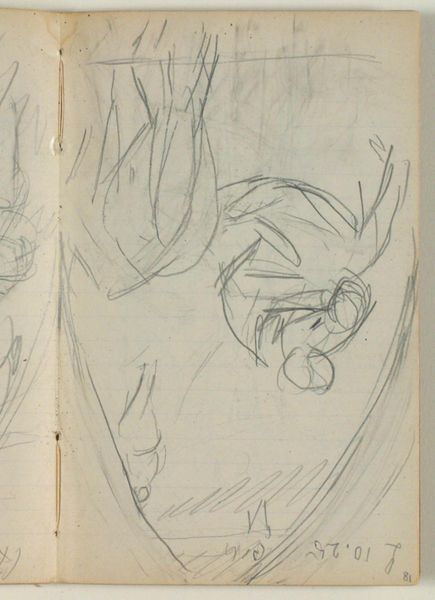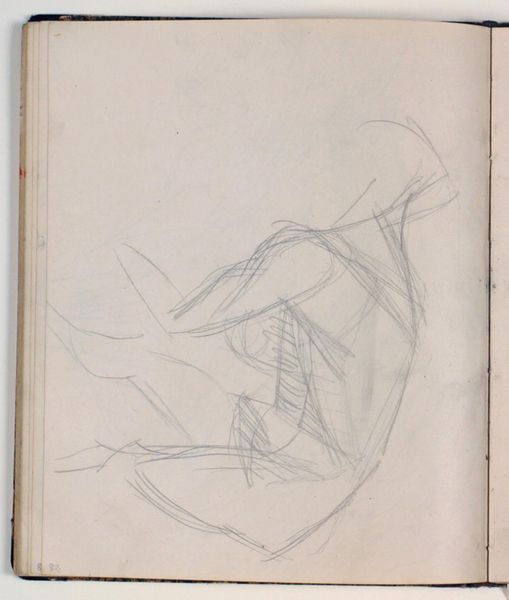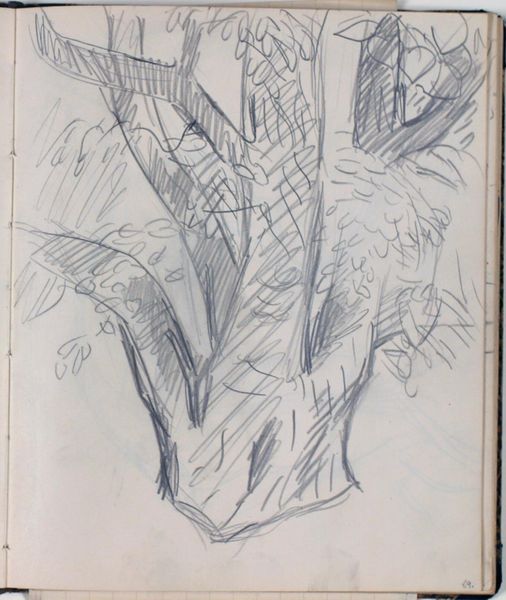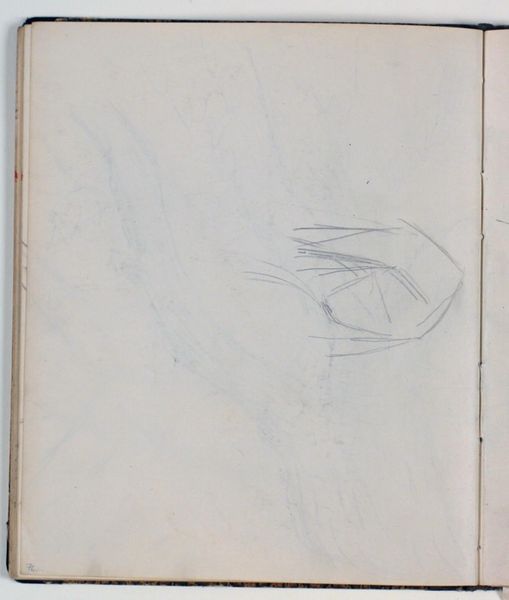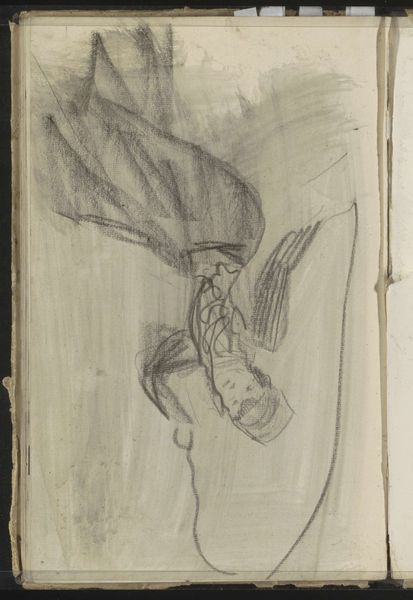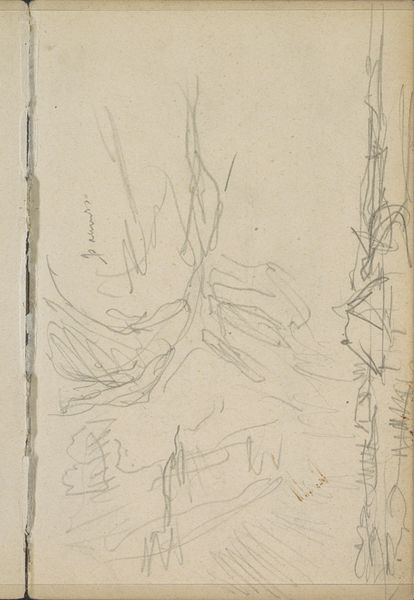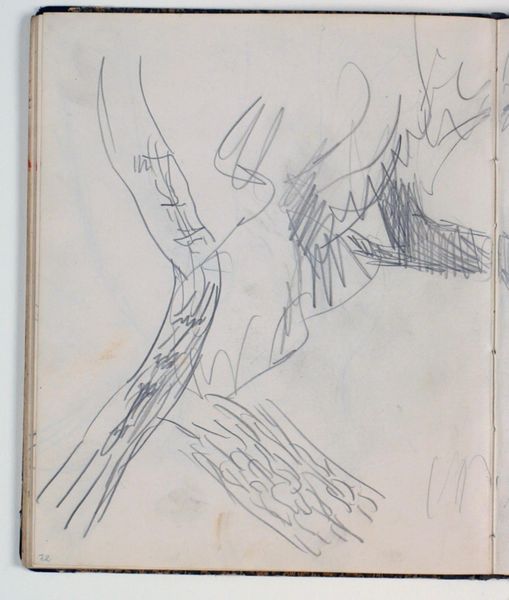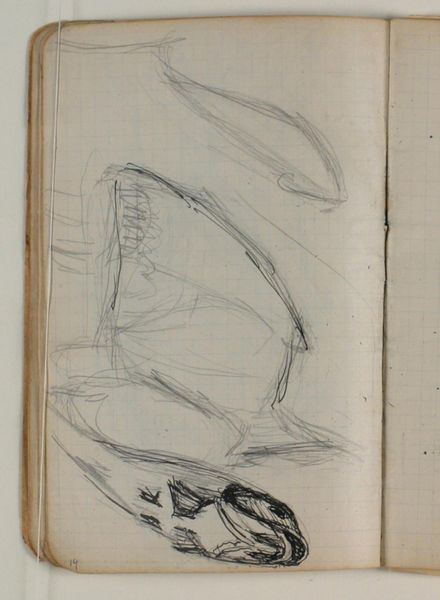
drawing, paper, pencil
#
drawing
#
landscape
#
paper
#
pencil
Dimensions: 226 mm (height) x 185 mm (width) x 112 mm (depth) (monteringsmaal), 221 mm (height) x 184 mm (width) (bladmaal)
Curator: Welcome. We're looking at Niels Larsen Stevns's "Studier af trækroner," or "Studies of Tree Crowns," a pencil drawing on paper, created between 1930 and 1936. Editor: Immediately, I'm drawn to the stark simplicity. The drawing is rudimentary yet expressive. It feels incomplete, but in a very intriguing way. Curator: Indeed. Trees, of course, possess deep symbolism across many cultures. The tree of life, for example, representing interconnectedness, growth, and resilience. Do you find any of these universal themes suggested here? Editor: Perhaps, but I'm more struck by the immediate, material qualities. It looks like a sketchbook study, rapidly executed. See how the paper is discolored, the spine clearly worn. It emphasizes the labor and physicality of the creative process, the means through which Stevns attempts to capture form and light. Curator: That's interesting. From a psychological perspective, the crown of the tree, reaching toward the sky, is frequently linked to aspiration and enlightenment. Perhaps Stevns was trying to visualize some form of spiritual striving or connection to something larger than himself? Editor: While I see the possible thematic interpretations, to me it's fundamentally about the act of drawing itself. What paper was he using, what type of pencil? How much pressure was applied in the hand? These seemingly minor physical details reveal Stevns’ artistic decision-making in ways broader symbolic interpretations often miss. Curator: I can appreciate that. This isn't a polished, finished painting but a moment of observation carefully captured. There is intimacy in its roughness. Editor: Exactly. It’s honest and straightforward about the realities of artistic production and creative output. It makes visible Stevns' labor. Curator: Well, whether seeing it as a vessel of symbolic resonance or as the trace of a material practice, I find Stevns has gifted us an intriguing, raw study that continues to fascinate and offer diverse entry points for our reflections. Editor: Indeed. Focusing on process reveals both the beauty and the mechanics of making and forces a reevaluation of the perceived separation between labor and high art. A worthwhile consideration indeed!
Comments
No comments
Be the first to comment and join the conversation on the ultimate creative platform.
